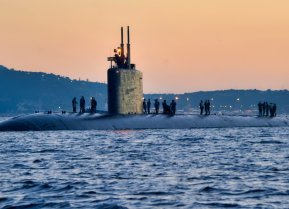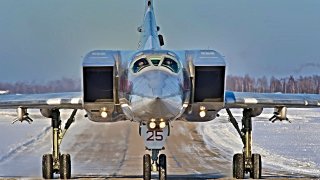Tu-22M: Russia's Old School Supersonic Bomber
The Russians have deployed their Tu-22M over the skies of Ukraine, specifically the Tu-22M3 variant, to strike targets in Mariupol.
While the Russian invasion of Ukraine has stalled, leaving observers to criticize the effectiveness of Russia’s military apparatus and equipment, Russia is still regarded as a competent designer of aerospace systems. And despite the fact that Russia has failed to secure the airspace above Ukraine, Russia’s aircraft are still respected for their abilities, and the danger they pose to Western interests. One Russian aircraft of particular concern is the Tupolev Tu-22M “Backfire,” a supersonic, variable-sweep wing, long-range strategic and maritime strike bomber. The Tu-22M was developed in the 1960s, but with repeated upgrades, is still relevant today.
Tupolev built nearly 500 Tu-22s between 1967 and 1993, and now, Russia is deploying modern variants, like the Tu-22M3M, which promises improved performance.
Introducing the Tu-22M
The Tu-22 was introduced in 1962, becoming the Soviet Union’s first-ever supersonic bomber. The original Tu-22 was a dog—with taxing maintenance requirements and poor serviceability; additionally, the bomber had terrible handling characteristics, landing at a 100km faster speed than other bombers, with a tendency to pitch upward and strike its tail upon landing. Generally, between its poor handling and poor visibility, the bomber proved difficult to fly. The Soviets set forth to overhaul the problematic bomber.
The overhaul resulted in an entirely new aircraft, worthy of a new designation. But in order to avoid embarrassment from the Tu-22’s failure, and to avoid criticism from the intercontinental ballistic missile lobby, the new bomber was designated the Tu-22M—a misnomer given that the bomber was a new platform, unrelated to the original Tu-22.
One of the most obvious differences between the Tu-22 and the new Tu-22M was the addition of a sweep-wing. The sweep-wing is most commonly associated with the F-14 Tomcat (thanks to the jet’s prominence in the 1986 film Top Gun) but can be found on a variety of airframes, from the F-111 Aardvark to the Panavia Tornado and the B-1 Lancer. What a sweep-wing does is move back and forth, mid-flight, to change the shape of the aircraft. The result is an aircraft that can operate in a straight-wing configuration (to increase drag and boost maneuverability at low speeds) and a swept-wing configuration (to reduce drag and achieve supersonic speeds).
The Tu-22M has been used in combat repeatedly, starting in the late 1980s, during the Soviet occupation of Afghanistan. Notably, the Tu-22M was deployed to provide cover as Soviet forces withdrew from the country, marking the conflict’s conclusion.
The Tu-22M’s practical performance was not always strong; maintenance issues plagued the jet, which seemed to suffer from low-quality manufacturing. The bomber’s engines, and the airframe itself, had concerningly short service lives. Actually, at one point the Soviet Air Force considered suing Tupolev for rushing subpar designs of the Tu-22M (and Tu-160) into service. Soviet bureaucracy compounded the Tu-22M’s maintenance problems because spare parts were difficult to procure, leading to aircraft being grounded for up to six months and a mission-capable rate of around 30-40 percent.
The Russians have deployed their Tu-22M over the skies of Ukraine, specifically the Tu-22M3 variant, to strike targets in Mariupol. Only sixty-three Tu-22Ms are known to still be in service today.
About the Author: Harrison Kass
Harrison Kass is a defense and national security writer with over 1,000 total pieces on issues involving global affairs. An attorney, pilot, guitarist, and minor pro hockey player, Harrison joined the US Air Force as a Pilot Trainee but was medically discharged. Harrison holds a BA from Lake Forest College, a JD from the University of Oregon, and an MA from New York University. Harrison listens to Dokken.


